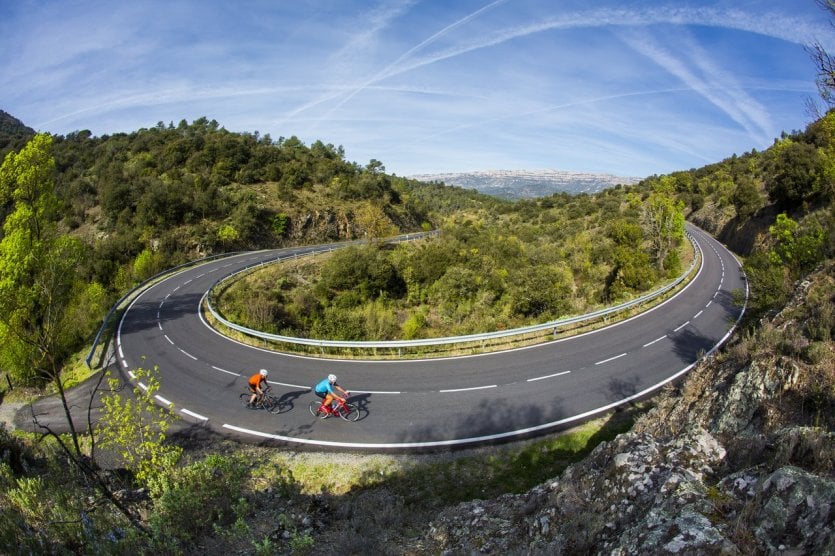
The Costa Daurada, part of the province of Tarragona, is located in southern Catalonia, about an hour's drive from Barcelona. This region is famous for its magnificent beaches. Its name derives from the golden color of the sand. For cyclists, road or mountain bikers, the Costa Daurada offers over 2,000 km of quiet, winding roads in the heart of nature. A true year-round paradise, characterized by a mild Mediterranean climate. The Costa Daurada is also home to a number of municipalities specializing in bicycle tourism. They have all been certified to guarantee that cyclists will find all the equipment they need to enjoy their favorite activity in the best possible conditions. On the seafront, you'll find towns like Cambrils, Salou, Vila-seca and La Pineda Platja, and inland, towns like Mont-roig del Camp - Miami Platja.
On these two-wheeled adventures, don't miss the Poblet monastery and the Roman heritage of Tarragona; marvel at Art Nouveau in Reus; plunge into the heart of the Middle Ages in Montblanc ; sample the delights of Mediterranean cuisine in Cambrils; explore the vineyards and olive groves of the Priorat region; indulge in wine tourism or discover the legacy of musician Pau Casals in the Penedès.
Discover the 10 most beautiful cycling routes on the splendid Costa Daurada.
1. The Six Passes Route
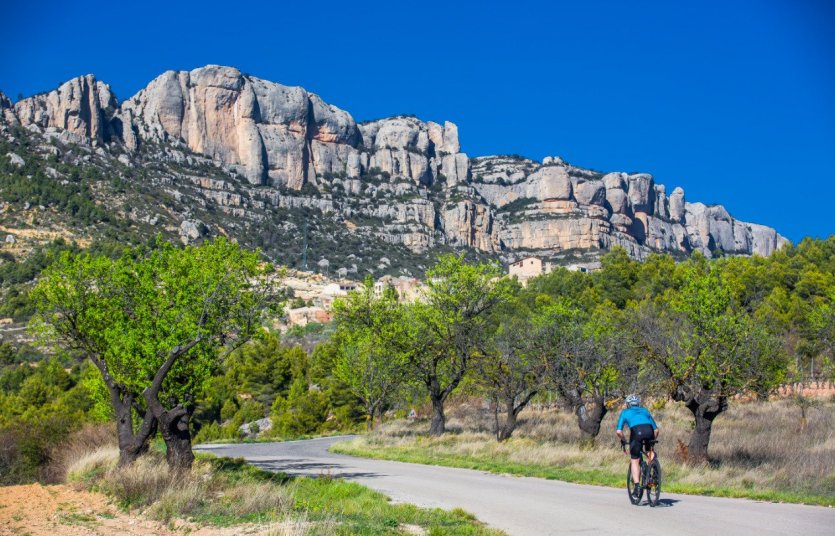
This demanding Costa Daurada route offers a unique experience. It offers winding roads through the historic Priorat region, with exceptional views from Montsant, at the heart of the natural park. The Six Passes Route starts in Cambrils, heading for the Priorat, passing through Montbrió, Riudecanyes, Duesaigües, then Coll de la Teixeta, before descending to Porrera, surrounded by vineyards of Grenache and Carignan. We then explore historic Priorat, passing through Torroja del Priorat, Vilella Baixa, and finally Escaladei, where the winemaking tradition has been preserved for centuries.
Then it's a tough climb up to La Morera, with gradients of up to 16% in the magnificent Montsant Natural Park. Finally, the return to Cambrils takes the road from Cornudella to La Mussara, crossing Alforja and Castillejos, to reach a 15-kilometer pass, marking the highest point of the Costa Daurada. A unique challenge for cycling enthusiasts.
2. La Mussara Route
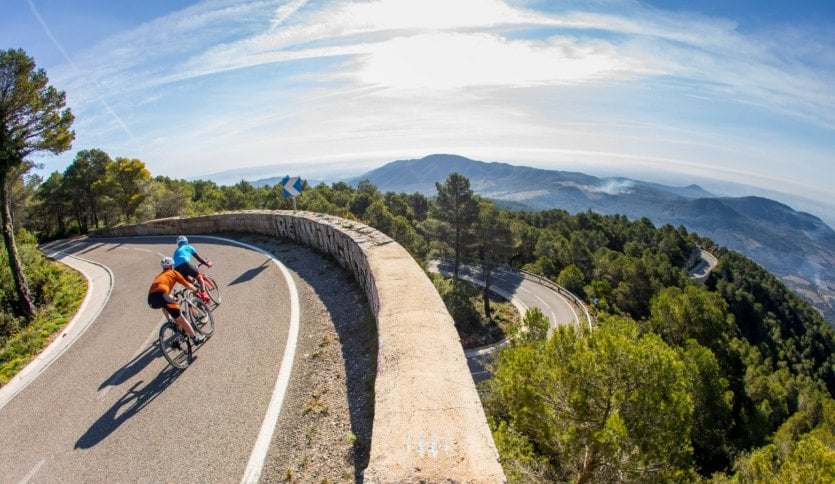
For mountain bikers, the Costa Daurada offers an exceptional experience. The starting point for the Route La Mussara is Salou, one of the region's major tourist destinations. The journey begins with a climb southwards, passing through Cambrils. You then enter the heart of the Costa Daurada's inland landscapes. We cross Montbrió del Camp, just 6 km from the sea, and then head for the Baix Camp region. This landscape is characterized by hazelnut fields and orchards, with stops at Riudoms, Les Borges del Camp, Alforja and Vilaplana, before reaching the summit of La Mussara. The ascent to La Mussara, with its 6.5% gradient, leads to the top of the Prades mountains, culminating at almost 2,000 m altitude. The panoramic view over the southern Costa Daurada from this point is spectacular. Although this climb can be demanding, rest assured, the route continues with a continuous descent through the Montsant Natural Park, followed by another climb with a 5% gradient into the Baix Camp. We finish by feeling the gentle Mediterranean breeze in Cambrils. An unforgettable cycling and mountain experience.
3. The Sea and Mountain Route
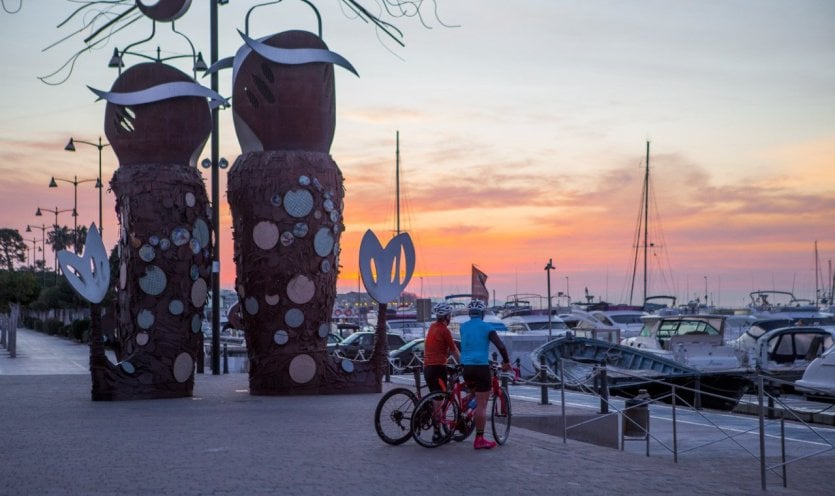
This route takes two-wheeled travellers through a variety of landscapes, from golden sandy beaches to pre-coastal mountains. You'll be immersed in a unique environment, with stops in rural villages where farming is the driving force behind the local economy. This is an opportunity to discover the culture of vineyards and olive groves, real landscape treasures.
The Route Mer et Montagne starts in Cambrils, famous for its exceptional gastronomy on the Costa Daurada, and continues on to Mont-roig del Camp. On the way to Priorat, you pass through La Torre de Fontaubella, and finally reach Marçà, a charming municipality surrounded by exceptional natural scenery. Here, La Pallissa is a must. The return to the coast leads to Falset, a town distinguished by its beautiful architecture. It is home to the modernist winery designed by Cèsar Martinell. We continue on to Duesaigües, where we admire two bridges built in 1893 to span the Enseula and Massos ravines.
4. The Cistercian Landscape Route
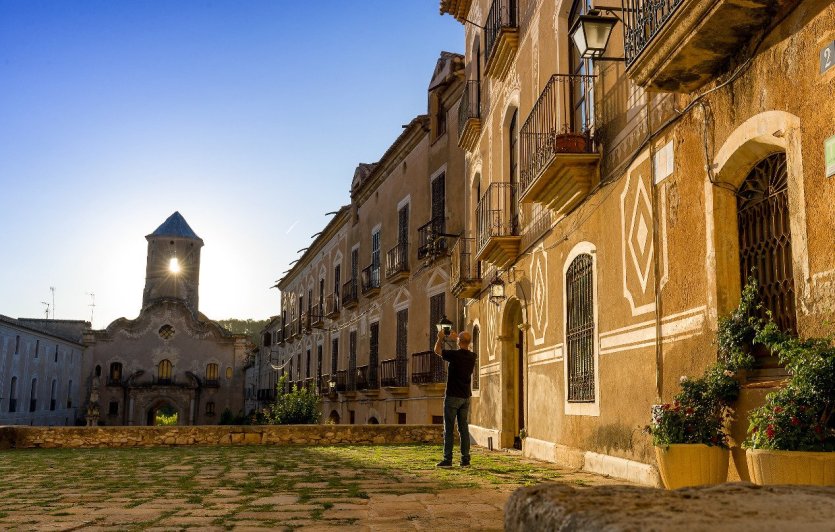
For centuries, the inland lands of the Costa Daurada have been farmed and managed by Cistercian monks. The Cister Landscapes Route is an excellent opportunity to explore a singular region, where vineyards coexist with cereal fields, creating panoramas that change with the seasons. Leaving Nulles, you take the inland roads to Vila-rodona and Aiguamúrcia, eventually reaching Santes Creus. Here you'll discover heritage treasures and corners of exceptional beauty, bordered by the serenity of the River Gaià. The journey continues to Pont d'Armentera, from where you follow the road to Querol and Santa Coloma de Queralt.
The return journey leads to Sarral, renowned for its production of wine and cava made from a rare native grape variety, trepat. Winegrowing activity is clearly visible along the surrounding roads, between Alt Camp and Cabra del Camp. Finally, the journey passes through El Pla de Santa Maria and Vila-rodona, before returning to Nulles to conclude this adventure.
5. The Penedès Landscape Route
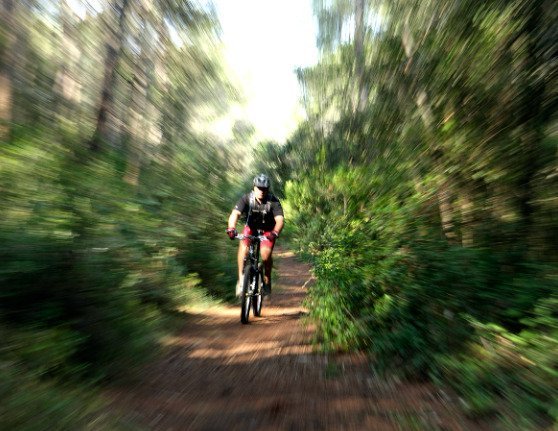
To complete this cycling itinerary, leave El Vendrell and head for Sant Jaume dels Domenys, where the climb to Collada de les Ventoses begins. The Route Paysages du Penedès is a winding route offering exceptional panoramic views, surrounded by typically Mediterranean vegetation. La Collada is also known as "La Atalaya". It leads to a residential area of the same name. The climb, with its 4.5% gradient, is 7.7 km long. From here, an enjoyable descent leads to the monastery of Santes Creus, a Cistercian abbey built in the XIIᵉ century, before returning to El Vendrell via Vila-rodona and Bonastre.
This route is the perfect way to discover the wine-growing landscapes of the Penedès Denomination of Origin.
6. The Priorat Wine Landscape Route
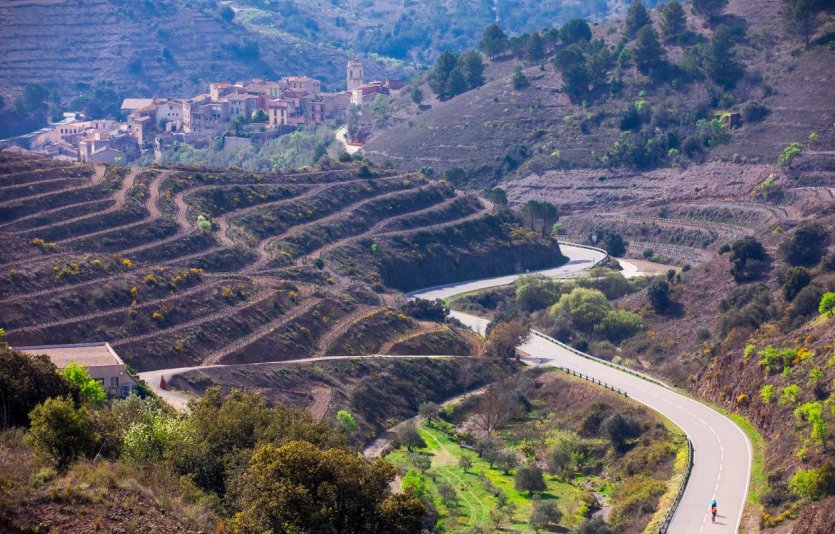
This emblematic Costa Daurada route begins in Falset, the capital of Priorat. The first climb, a real sporting challenge, leads to Gratallops, a picturesque commune in the historic Priorat region. Despite its rigor, the route offers breathtaking panoramas of spectacular vineyards, with the Montsant Natural Park in the background, the only one of its kind in Costa Daurada territory. We continue to the Consolació hermitage, protected by a row of cypress trees. A place revered by Priorat locals, it offers magnificent views over the vineyards. Next, we head for Vilella Baixa, dubbed the "New York of Priorat" by writer Josep María Espinàs. This is the perfect place to explore the Priorat of oil, with villages such as Cabacés, La Bisbal, Margalef and Ulldemolins, all nestled on the edge of the Sierra de Montsant Natural Park.
From Cornudella, the last two climbs of the Priorat Wine Landscape Route await cyclists, leading successively to Porrera and Falset. This cycling experience allows you to take full advantage of Priorat's breathtaking landscapes, while discovering the charms of its wine and olive-growing villages.
7. The Poblet Route and the Prades mountains
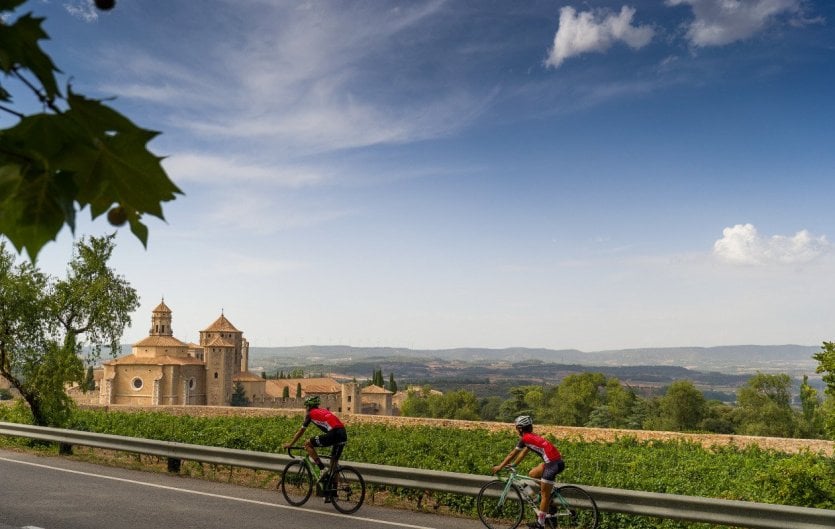
The journey begins at the Poblet monastery, the largest Cistercian monastic complex in the world, proudly listed as a World Heritage Site by UNESCO. Its visit is one of the Costa Daurada's must-see cultural attractions. From here, the route heads towards the Col d'Arena. This 19 km ascent crosses the Montagnes de Prades, an area classified in the Plan des Espaces d'Intérêt Naturel with spectacular craggy landscapes. Eventually you reach Prades, often nicknamed the "red city" because of the color of its stones. The Route Poblet et les montagnes de Prades continues towards Capafonts, then descends to La Riba, taking us back to l'Espluga de Francolí. Along the way, we also pass through Montblanc, a town renowned for its impressive 14th-century walls, 1.2 km long and 6 m high.
8. The Serra de la Llaberia Route
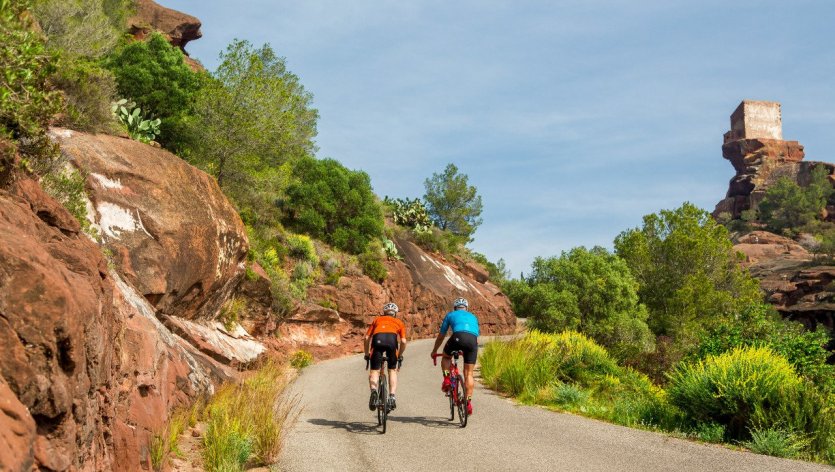
The Serra de la Llaberia route reveals narrow gorges, dizzying cliffs and spectacular panoramic balconies. A natural environment of exceptional beauty. The adventure begins at Mont-roig del Camp, where we head for Pratdip, reputed to be the territory of the "dips", legendary little creatures that make their home in the mountains. From here, we enter the heart of the Serra de la Llaberia. The climb to Coll de Fatxes is nothing short of spectacular. It lies between the municipalities of Vandellòs, L'Hospitalet de l'Infant and Vall de Llors, close to Montalt and La Mola de Genessies. From here, a road leads to Tivissa, marking the entrance to the Priorat region. This area is characterized by rolling hills where vines reign supreme, producing season after season of top-quality wines. Then it's time to start climbing Coll de Colldejou, backed by the Mola mountain, one of the treasures of the Costa Daurada. Then it's back to Mont-roig del Camp, bringing an unforgettable adventure through breathtaking scenery to a close.
9. The Valls South Route
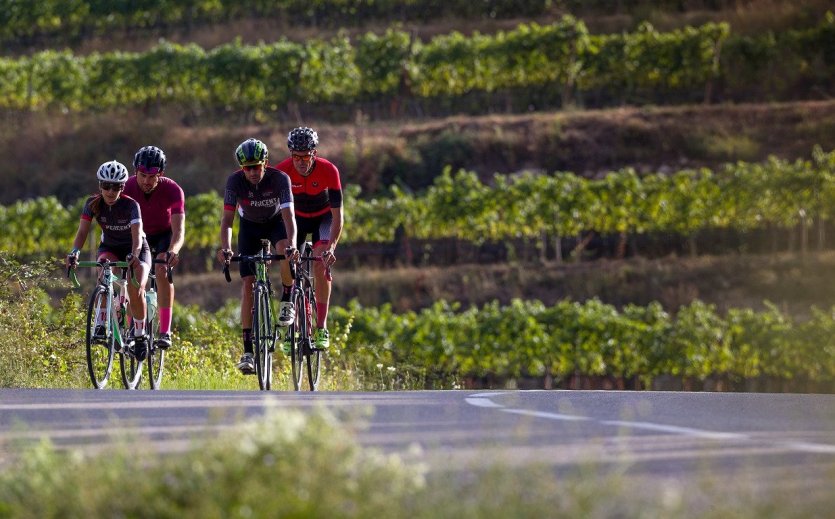
In road cycling mode, this route takes you through the south of Valls, passing through the charming little villages that flood the region. It also allows you to bypass the main roads. The starting and finishing point is Valls, a city of remarkable buildings. It is also famous for being the cradle of the calçot tradition, a type of white onion with a fine bulb that is the subject of a town festival, and the starting point for the famous human towers, known as castells.
With virtually no gradient, the Route Valls sud is ideal for those wishing to follow a leisurely route. It is one of the flattest routes on the Costa Daurada, with only a few gentle climbs. The route passes through various villages in the Alt Camp, Baix Penedès and Tarragonès comarques, not forgetting fields of olive, almond, hazelnut and carob trees and vineyards.
10. The Vall del Riu Brugent Route
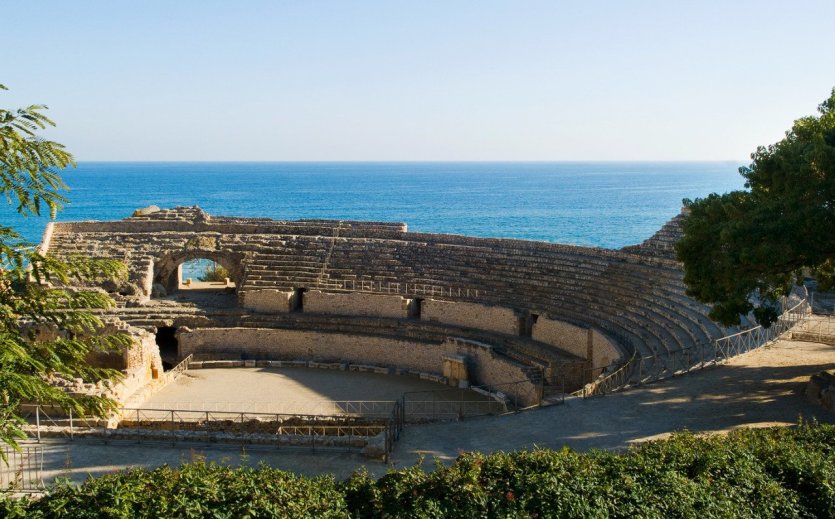
This demanding cycling route starts in L'Arboç, in the Penedès region, and leads right through the Prades mountains, offering breathtaking views over the valley of the River Brugent. The Prades mountains are home to a rich biodiversity in the valleys of the Siurana, Brugent and Glorieta rivers. The Route Vall del Riu Brugent immerses cycling enthusiasts in the unspoilt nature of the Costa Daurada, with its rural landscapes and vegetation of pines, holm oaks and other characteristic mountain oaks.
Then, as you cross the Alt Camp and Tarragonès plains, the landscape changes to olive and hazelnut groves. Arriving in Tarragona, we finally discover the UNESCO World Heritage Roman remains of this exciting city. The last part of the tour takes you along the coast, where you can enjoy the atmosphere of the seaside resorts of Altafulla, Torredembarra and Creixell. This tour sums up the essence of the Costa Daurada, combining a diversity of landscapes, unspoilt nature, historical heritage and seaside pleasures.


